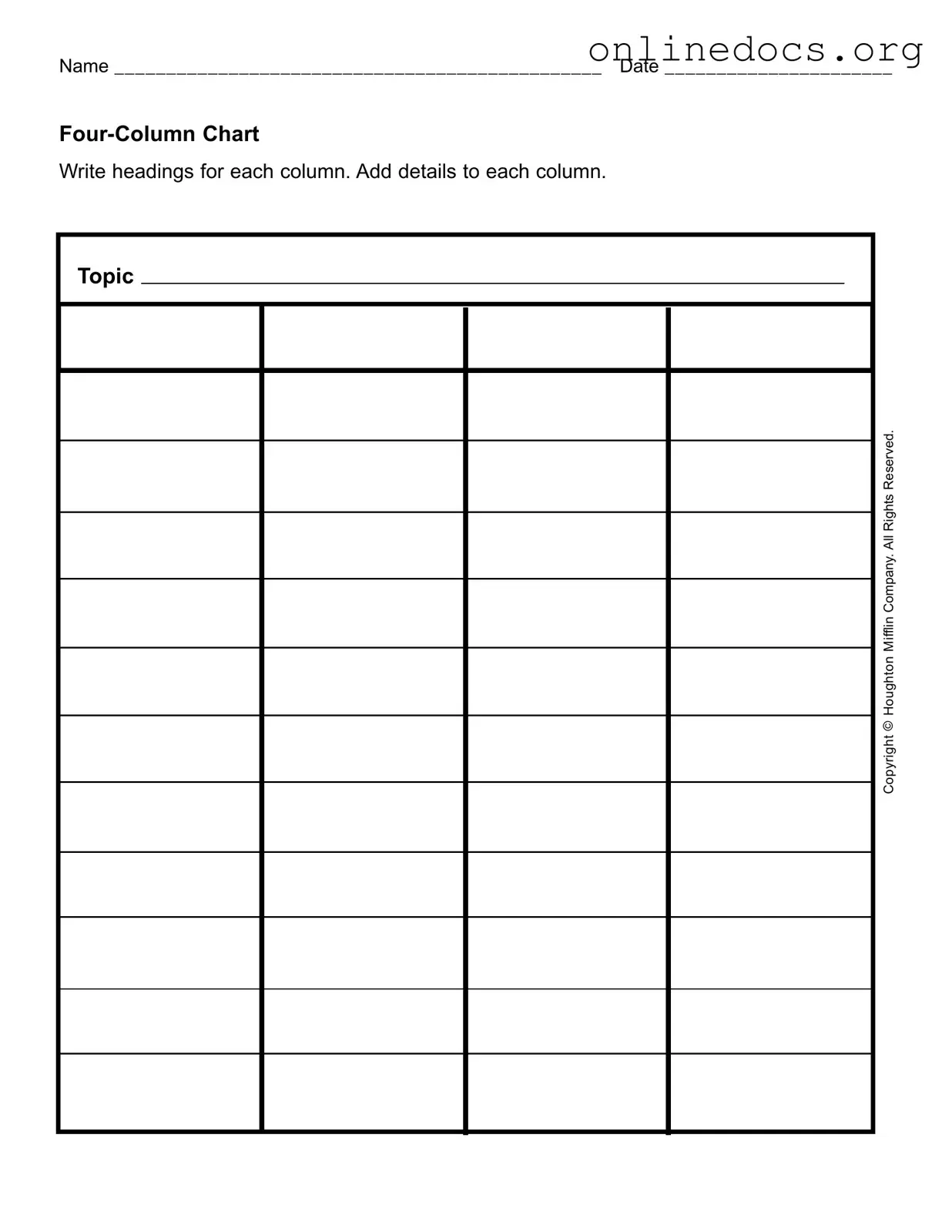The Four Column Chart form is similar to the SWOT Analysis template. Both documents help in organizing information systematically. A SWOT Analysis focuses on identifying Strengths, Weaknesses, Opportunities, and Threats related to a specific project or organization. Like the Four Column Chart, it encourages clear categorization of information, allowing users to visualize different aspects of a situation. This structured approach aids in decision-making and strategic planning.
Understanding the various formats for organizing information can enhance clarity and efficiency in data presentation. For instance, the California Boat Bill of Sale form, which records the transfer of boat ownership, exemplifies the importance of documentation in transactions. To learn more about this essential form, you can visit https://fillpdf-forms.com.
Another document that resembles the Four Column Chart is the T-Chart. A T-Chart is used to compare two different ideas, concepts, or options side by side. It consists of two columns, typically labeled with opposing viewpoints or categories. Similar to the Four Column Chart, the T-Chart promotes clarity by allowing users to weigh pros and cons, facilitating a more informed decision-making process.
The Mind Map is yet another document that shares similarities with the Four Column Chart. While a Mind Map is more visual in nature, it organizes information around a central idea. Each branch of the map can represent different categories, much like the columns in the Four Column Chart. This visual organization helps users see connections between ideas, making it easier to brainstorm and develop concepts in a structured manner.
Flowcharts also bear resemblance to the Four Column Chart in terms of organization. A flowchart outlines a process or sequence of events, using shapes and arrows to depict the flow of information. While the Four Column Chart organizes details in columns, both documents serve the purpose of clarifying complex information. They help users understand relationships and sequences, making it easier to follow steps or analyze data.
Lastly, the Project Management Chart is similar to the Four Column Chart in its focus on organizing tasks and responsibilities. This chart typically includes columns for task names, responsible individuals, deadlines, and status updates. Like the Four Column Chart, it allows for clear categorization of information, ensuring that all team members are on the same page regarding project progress and accountability.
